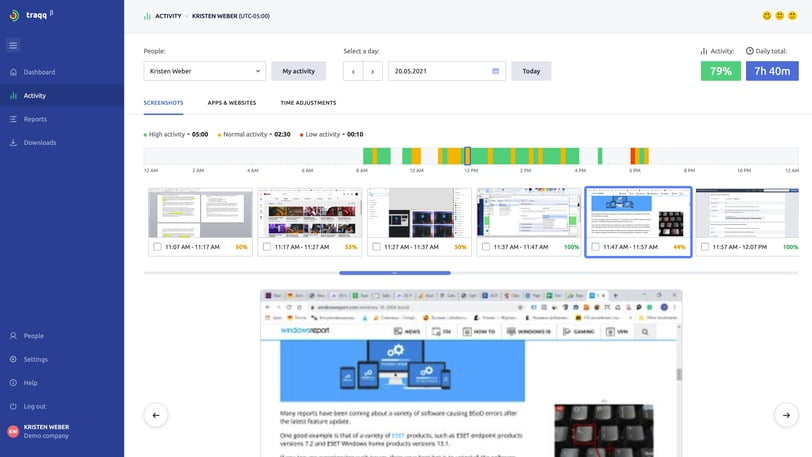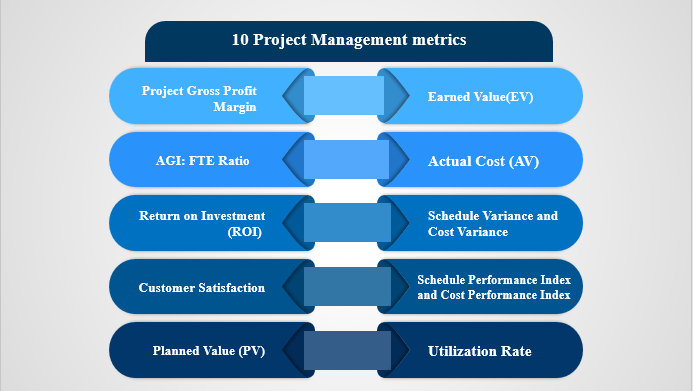
A remote work model can positively impact your company, allowing you to acquire top talent regardless of location, reduce overhead expenses, and keep employees longer.
Remote teams enjoy the freedom to work from home, save on the commute, take fewer sick days, and maintain a healthy work-life balance. That increases productivity, job satisfaction, and retention.
It is an irrefutable win-win, making many companies increasingly embrace the concept.
However, managing a remote team is another story. Many issues arise, each standing in the way of seamless collaboration, cohesion, productivity, and business growth. Fortunately, there is a solution to every problem.
Before exploring common issues with remote teams and tried-and-true solutions, let’s see why addressing them matters.
Why should you pay attention to issues with remote teams?
Uncovering and solving issues with remote teams can help improve your business overall.
For instance, your remote customer service team must have knowledgeable, self-motivated professionals who quickly respond to messages. Client satisfaction will decrease if they don’t meet those requirements due to inadequate tools, distractions, scheduling conflicts, or lack of clarity regarding responsibilities.
The same goes for project managers, content writers, marketers, sales reps, and other members of your remote team. Problems will not resolve themselves if you turn a blind eye to them – they will keep growing and negatively affect organizational performance and the value you provide to customers.
Ignoring some problems might make your remote workers jump ship and seek better career opportunities. Helping them overcome challenges will motivate them to stay and grow with your company, going the extra mile to achieve your goals.
What are the top 8 common issues that arise with remote teams, and how to solve them?
Most remote workers cite at least one of the following issues as their primary obstacle to completing daily tasks and delivering quality. Here’s how to solve each problem and empower your virtual team.
Problem: Poor or delayed communication
Poor or delayed communication is typical in remote setups lacking a dedicated platform for keeping everyone in the loop. Employees may not be on the same page when they use different channels to brainstorm, collaborate, share knowledge, discuss objectives, and clarify duties.
What if you send an email to inform a particular employee about the latest project changes and they don’t read it on time because you typically communicate via messenger software? You could miss a crucial deadline or deliver subpar results.
Solution: Foster open internal and external communication methods
Developing an internal and external communication plan will help keep your remote team, stakeholders, and customers up to date with projects and company announcements.
Utilize a real-time communication platform where your employees can receive instant notifications on project changes, collaborate on tasks, and share files and documents. Integrate it with your email client to ensure no one misses an update.
As for external communication, you can display announcements on your website and distribute them via email and social media to ensure you reach everyone.
Problem: Tracking tasks and optimizing productivity
Monitoring task progress can be daunting when you can’t pop by your employees’ desks to see what they’re doing.
Have they started working on specific tasks? Will they meet the deadlines? Are they procrastinating due to distractions like social media? How active are they during work hours?
Project management tools can help, but they won’t tell you how productive your remote workers are.
Solution: Provide thorough onboarding processes and appropriate tools for the job
A structured onboarding process gives employees adequate training and knowledge to perform daily tasks and become productive members of your team. It helps them acclimate and commit to the job and grasp the tools they will use daily, driving motivation, engagement, and retention.
To optimize productivity, you will need a time tracker like Traqq to monitor your employees during work hours. You will discover the websites they visit, their time on each task, activity levels, and peak productivity times.

Your chosen tool should support ethical time tracking, like blurring the screenshots to respect your employees’ privacy.
Problem: Delegation confusion or misinterpretation
Delegating tasks to remote teams can cause confusion and misinterpretation when leaders don’t inform employees about their expectations for each task and project. Teammates may not understand who is doing what and when they should do it, eventually failing to drive projects forward and achieve set goals.
Solution: Clarify duties, responsibilities, and expectations
You will eliminate confusion if you clarify all project, marketing, sales, and customer service responsibilities (among others) and each person’s essential duties. Knowing what you expect from them will enable every employee to complete tasks with flying colors and enjoy team unity.
You will micromanage less since everyone will know what to do and when to do it, saving time on both ends.
Get everything in writing to communicate expectations and support seamless future reference.
Problem: Managing company projects
Managing company projects becomes challenging when you have teammates in different locations. Communication and delegation play crucial roles here, helping everyone understand the goals, objectives, benefits, and implications of missing deadlines.
How can you ensure your remote workers perform well and identify areas for improvement? You will need to consult data.
Solution: Identify metrics to show weak points and progress

Productivity, project completion time, gross profit margin, earned value, ROI, and customer satisfaction are some project management metrics to measure. They will help you identify strengths and weaknesses, track progress, and uncover opportunities for improvement.
Problem: Inconsistent work ethics
Many remote teams struggle with inconsistent work ethics. Some people regularly clock in late, others don’t prioritize tasks effectively, and some take frequent breaks and procrastinate.
These issues occur in the office, but team leaders can monitor on-site employees to improve their work ethics. How can you do it with remote teams?
Solution: Be observant, assess performance, and reward strong work ethic
Various tools like productivity apps and time trackers can help you assess employees’ performance and identify those with strong work ethics. You can reward their efforts to show appreciation and motivate them to continue their excellent work.
Everyone welcomes monetary incentives like bonuses, salary increases, and gift cards. However, event tickets and days off work can also do the trick. Don’t forget the power of a “thank you” or shout-outs from satisfied customers and clients.
Publicly recognizing your star employees will motivate others to follow in their footsteps and improve work ethics.
Problem: Scheduling difficulties or time zone conflicts
Scheduling virtual team meetings, video conferences, and calls with remote teammates can be a nightmare, primarily if they operate in different time zones. Not everyone can work during the same hours, but you still need some flexibility.
How can you ensure your remote employees are available when you need them without infringing on their free time or making some feel left out?
Solution: Share team calendars and have asynchronous/flexible schedules
Create an integrated calendar with your remote team schedule to enable everyone to set and view availability times. You will eliminate time-consuming back-and-forth communications, keep all employees in sync, and set up meetings at the most convenient time.

Your remote workers don’t have to be online simultaneously – asynchronous schedules can do the job and maximize productivity.
Problem: Building trust
Trust issues often exist in remote teams, primarily when employees haven’t met their leaders and other supervisors in person.
Managers can’t physically see what employees are doing, often resorting to micromanaging. Remote workers may worry about not receiving a regular paycheck or having more tasks on their plate than their colleagues for the same pay rate.
A work environment riddled with distrust can create a dysfunctional workplace culture and push employees out the door.
Solution: Be transparent with the company vision, long-term roadmaps, and shared missions
Transparency is the key to building and maintaining trust in any work setting, especially a remote one. Be open and honest about project expectations, the company vision, shared missions, long-term roadmaps, everyone’s workload, work hours, pay rates, and payment timelines.
A process library can do more than break knowledge silos and ensure compliance with company policies – it can help share the necessary information to establish trust. It is a digital repository of everything your remote teammates need to work coherently and efficiently and avoid confusion.
Problem: Keeping morale high
Remote teams often experience low morale due to isolation and lack of face-to-face interactions. That negatively affects their productivity and happiness, compelling many to quit and search for more inspiring jobs.
Solution: Organize regular one-on-one meetings and offer feedback on performance
Regular one-on-one meetings to connect with your remote workers, ask about their challenges, and provide performance feedback will show you care about their well-being and boost their morale.
Showing you value them, recognizing their efforts, and offering support will go a long way. You can also organize annual meet-ups to get everyone together in one place for much-needed team building.
Conclusion
Many more issues may arise with remote teams, but each has a solution. The challenges above are the most prevalent – focus on them before uncovering other potential problems. You will strengthen your team quickly and make everyone indispensable contributors to your company’s success and growth.


